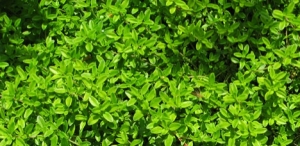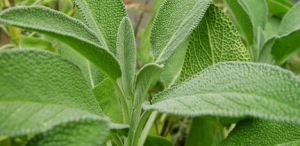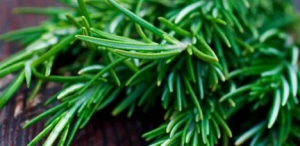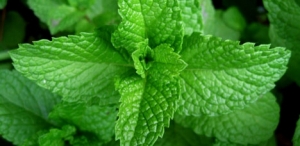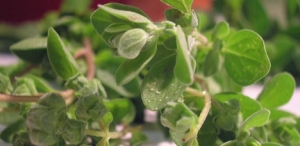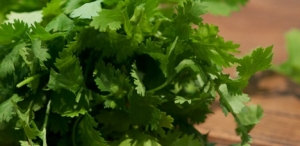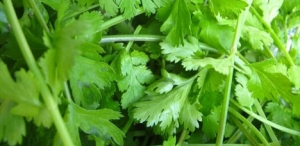There are several varieties of this mint-family member, a perennial herb native to southern Europe and the Mediterranean. Garden thyme, the most often used variety, is a bush with gray-green leaves giving off a pungent minty, light-lemon aroma. Other varieties include the narrow-leafed French thyme and broad-leafed English thyme.
The most well-known other variety of wild thyme - a thick ground cover - is lemon thyme , an herb with a more pronounced lemon aroma than garden thyme. Whatever the variety, thyme is widely used in cooking to add flavour to vegetables, meat, poultry and fish dishes, soups and cream sauces. It's a basic herb of French cuisine and integral to bouguet garni. Fresh As with all herbs, thyme should be stored in a cool, dark place for no more than 6 months.
This native Mediterranean herb has been enjoyed for centuries for both its culinary and medicinal uses. The name comes from a derivative of the Latin salvus, meaning "safe," a reference to the herb's believed healing powers. The narrow, oval, gray-green leaves of this pungent herb are slightly bitter and have a musty mint taste and aroma. Small bunches of fresh sage are available year-round in many supermarkets.
Choose sage by its fresh color and aroma. Refrigerate wrapped in a paper towel and sealed in a plastic bag for up to 4 days. Dried sage comes whole, rubbed (crumbled) and ground. It should be stored in a cool, dark place for no more than 6 months. Sage is commonly used in dishes containing pork, cheese and beans, and in poultry and game stuffing's. Sausage makers also frequently use it to flavour their products.
Used since 500 B.C., rosemary is native to the Mediterranean area (where it grows wild) but is now cultivated throughout the world. Early on, this mint-family member was used to cure ailments of the nervous system. Rosemary's silver-green, needle-shaped leaves are highly aromatic and their flavour hints of both lemon and pine.
This herb is available in whole-leaf form (fresh and dried) as well as powdered. Rosemary essence is used both to flavour food and to scent cosmetics. Rosemary can be used as a seasoning in a variety of dishes including fruit salads, soups, vegetables, meat (particularly lamb), fish and egg dishes, stuffing's and dressings.
Long a symbol of hospitality, Greek mythology claims that mint was once the nymph Mentha. She angered Pluto's wife Persephone, who turned her into this aromatic herb. There are over 30 species of mint, the two most popular and widely available being peppermint and spearmint. Peppermint is the more pungent of the two. It has bright green leaves, purple-tinged stems and a peppery flavor. Spearmint leaves are gray-green or true green and have a milder flavour and fragrance.
It's most plentiful during summer months but many markets carry it year-round. Choose leaves that are evenly colored with no sign of wilting. Store a bunch of mint, stems down, in a glass of water with a plastic bag over the leaves. Refrigerate in this manner for up to a week, changing the water every 2 days. Mint is used in both sweet and savory dishes and in drinks such as the famous mint julep.
Early Greeks wove marjoram into funeral wreaths and planted it on graves to symbolize their loved ones' happiness both in life and beyond. There are many species of this ancient herb, which is a member of the mint family. The most widely available is sweet marjoram, usually simply called "marjoram." It has oval, inch-long, pale green leaves and a mild, sweet, oregano like flavor. In fact, wild marjoram is another name for oregano.
Marjoram is available fresh in some produce markets and supermarkets with large fresh-herb sections. Marjoram can be used to flavour a variety of foods, particularly meats (especially lamb and veal) and vegetables. Because marjoram's flavour is so delicate, it's best added toward the end of the cooking time so its essence doesn't completely dissipate.
In ancient times parsley wreaths were used to ward off drunkenness — though proof of their efficacy in that capacity is scarce. Today, this slightly peppery, fresh-flavored herb is more commonly used as a flavoring and garnish. Though there are more than 30 varieties of this herb, the most popular are curly-leaf parsley and the more strongly flavored continental or flat-leaf parsley. Fresh curly leaf parsley and continental parsley is widely available year-round.
Parsley is sold in bunches and should be chosen for its bright-green leaves that show no sign of wilting. Wash fresh parsley, shaking off excess moisture, and wrap first in paper towels, then in a plastic bag. Refrigerate for up to a week. Dried parsley is available in the spice section of most supermarkets but bears little resemblance to the flavour of fresh. Parsley is an excellent source of vitamins A and C.
Native to the Mediterranean and the Orient, coriander is related to the parsley family. Fresh coriander leaves have an extremely pungent odor and flavour that lends itself well to highly seasoned food. Though it's purported to be the world's most widely used herb, many Americans and Europeans find that fresh coriander is definitely an acquired taste.
Choose leaves with an even green color and no sign of wilting. Store a bunch of coriander, stems down, in a glass of water with a plastic bag over the leaves. Refrigerate in this manner for up to a week, changing the water every 2 days. Coriander leaves are used widely in the cuisines of India, Mexico, the Orient and the Caribbean.
